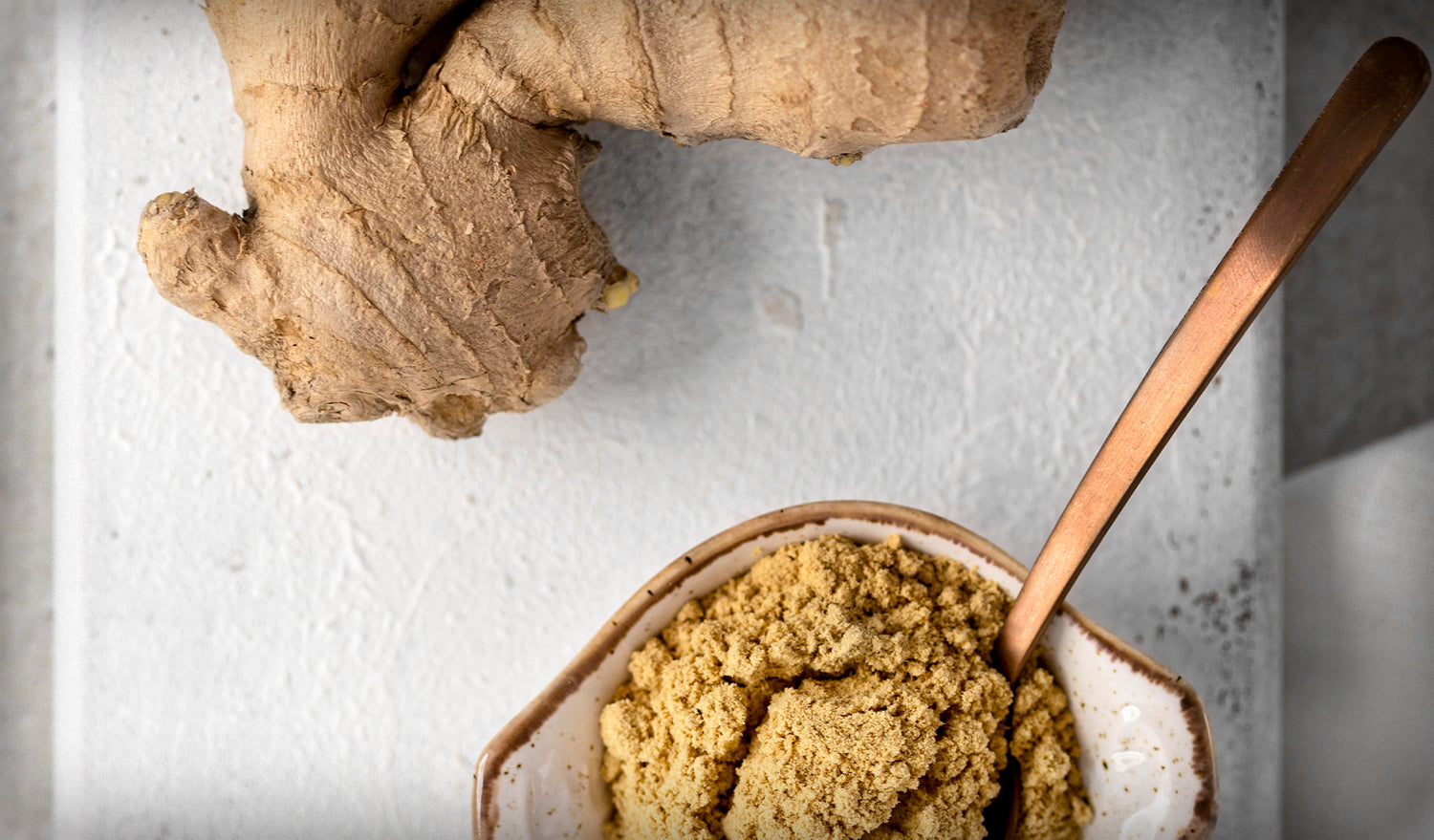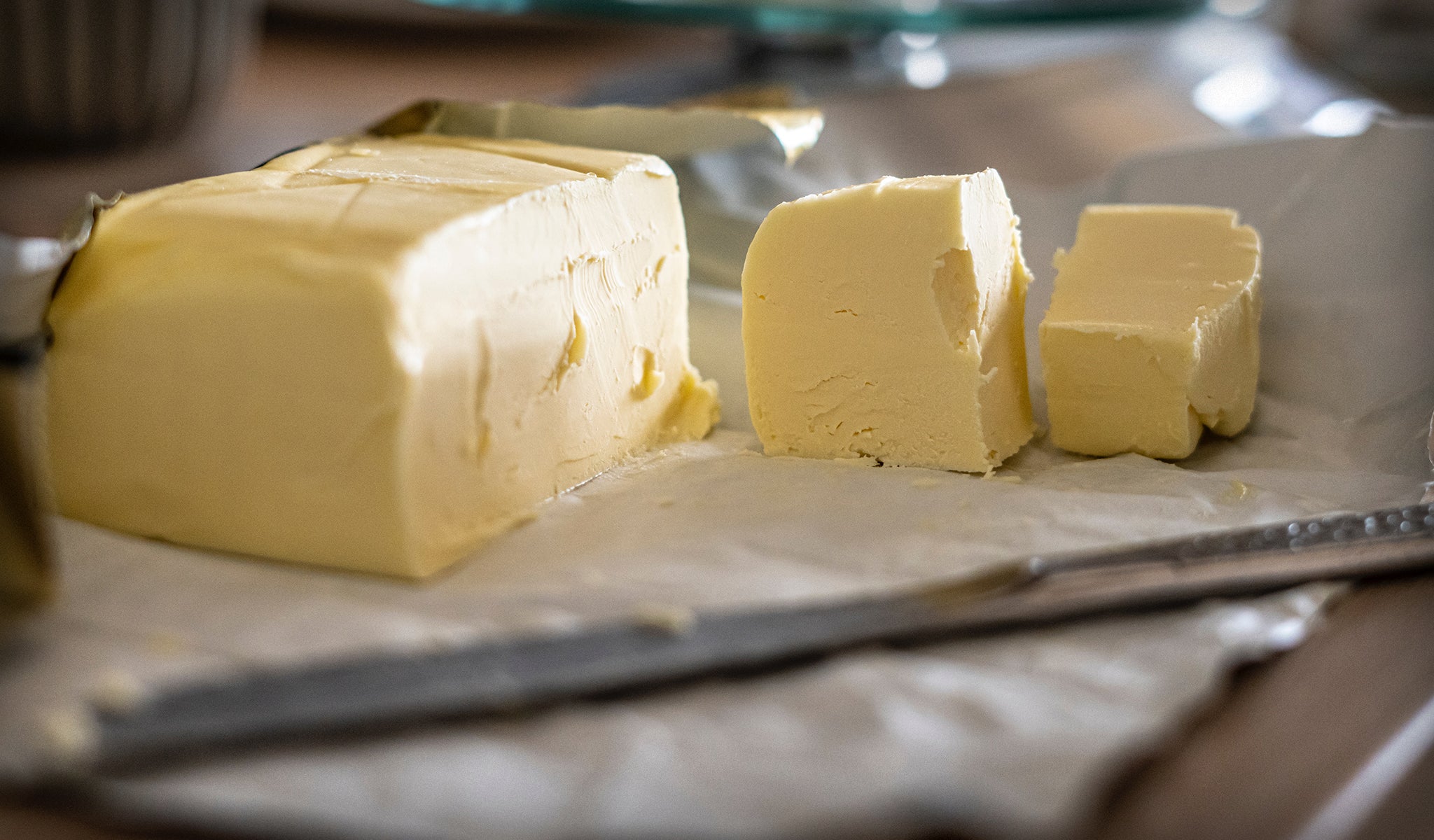GINGER...THE MOVIE STAR!
Ginger is an erect perennial herb that has thick tuberous rhizomes (underground stems and roots). Ginger’s botanical name, Zingiber officinale, is likely derived from its Sanskrit name, singabera, meaning “horn-shaped.”
The rhizome is branched of small “arms” usually 2 inches in circumference. A piece of the rhizome is often called a “hand”. It has a pale yellow interior and a skin varying and color from brown to off-white. Jamaican ginger, which is pale buff, is regarded as the best variety. African and Indian ginger is darker skinned and generally inferior, with the exception of Kenya ginger, and it’s flesh can be yellow, white, or red in color, depending upon the variety. The brown skin may be thick or thin, depending upon whether the plant was harvested when it was mature or young, respectively. Ginger rhizome has a firm yet striated texture and boosts a taste that is fragrant, pungent, and hot.
Ginger is available in various forms:
- Whole fresh roots. These provide the freshest taste. The roots are collected and shipped when they are still immature; the outer skin is a light green color.
- Dried roots. These are sold either “black” with the root left on, or “white” with the skin peeled off. The dried root is available whole or sliced.
- Powdered ginger. This is the buff colored ground spice made from dried root.
- Preserved or “stem” ginger. This is made from fresh young roots, peeled and sliced, then cooked in a heavy sugar syrup. The ginger pieces and syrup are canned together. They are soft but remain hot and spicy.
- Crystallized ginger. This is also cooked in sugar syrup, then air dried and rolled in sugar.
- Pickled ginger. The root is sliced paper thin and pickled in a vinegar solution. This pickled ginger, known in Japan as gari, often accompanies sushi to refresh the pallet between courses.
- Fermented ginger. Sliced and fermented in saltwater brine. Can be used as pickled ginger but adds to digestive support.
HISTORY
Ginger is a native to south eastern Asia, India, and China, where it has been a very liberal component of the diet. Ginger is found in ancient Chinese, Indian, and Middle Eastern culture and has long been valued for its aromatic, culinary, and medicinal properties. Ginger has also been important in Chinese medicine for many centuries and is mentioned in the writings of Confucius.
The ancient Romans first imported ginger from China almost 2000 years ago. From that time it’s popularity in Europe remain focused in the Mediterranean region until the ninth century. Because ginger had to be imported from Asia, it remained a relatively expensive spice. Nevertheless, it was still in great demand. As a result, Spanish explorers introduce ginger to the west Indies, Mexico, and South America in an effort to increase its availability.
By the 16th century, these areas began exporting the precious herb back to Europe. Subsequently it became so popular in Europe that it was included in every table setting, like pepper and salt. A common article of medieval and Renaissance trade, it was one of the spices used against the plague. In English pubs and taverns in the 19th century, barkeepers put out small containers of ground ginger for people to sprinkle into their beer - the origin of ginger ale. In recent times, the top commercial producers of ginger include Jamaica, India, Fiji, Indonesia, and Australia.
HEALTH BENEFITS
Historically, ginger has a long tradition of being very effective in alleviating symptoms of gastrointestinal distress. In herbal medicine, ginger is regarded as an excellent carminative, a substance that promotes the elimination of intestinal gas, and intestinal spasmolytic, a substance that relaxes and soothes the intestinal tract. These properties can be attributed to its volatile component.
Modern scientific research has revealed that ginger possesses numerous therapeutic properties, including carminative and intestinal spasmolytic effects, antioxidant effects, inability to inhibit the formation of inflammatory compounds, and direct anti-inflammatory effects. A combination of ginger, cardamom, cinnamon, and coriander is carminative and stimulating to the digestion.
An indication of ginger's action in eliminating gastrointestinal distress is offered by recent clinical studies with ginger in preventing the symptoms of motion sickness, especially seasickness. In one early study ginger was known to be far superior to Dramamine, a commonly used over-the-counter and prescription drug for motion sickness. Ginger root appears to be equally effective for automobile, airplane, train, or boat trips. It reduces all symptoms associated with motion sickness, including dizziness, nausea, vomiting, and cold sweating. However, unlike Dramamine, which works on the central nervous system, ginger affects the gastrointestinal track and slows the feedback interaction between the stomach and the nausea center in the brain by absorbing and neutralizing gastrointestinal hormones, toxins, and acids.
Ginger has also been used to treat the nausea and vomiting associated with pregnancy including hyperemesis gravidarum, the most severe form of pregnancy-related nausea and vomiting. This condition usually requires hospitalization. In a double blind trial, a dose of 250 mg of ginger root powder four times a day brought about a significant reduction in both the severity of the nausea and the number of attacks of vomiting in 19 of 27 cases during early pregnancy which is less than 20 weeks.
Ginger also contains very potent anti-inflammatory compounds called gingerols. These substances are believed to explain why so many people with osteoarthritis and rheumatoid arthritis experience reductions in their pain levels and improvements in their mobility when they consume ginger regularly. Gingerols inhibit the formation of inflammatory cytokines, chemical messengers of the immune system.
Ginger contains high levels of active substances, so dosages do not have to be high in order to produce beneficial effects. Although most scientific studies have used powdered ginger root, fresh ginger root at an equivalent dosage is believed to yield even better results because it contains active enzymes. Most studies utilized 1 g of powdered ginger root. This would be the equivalent of approximately 10 g or 1/ third of an ounce of fresh ginger root roughly a 1/4 inch slice.
For nausea, ginger tea made by steeping one to two 2 inch slices (1/2 inch slices equals 2/3 of an ounce) of fresh ginger in a cup of hot water will likely be all you need to settle your stomach. For arthritis some people have found relief consuming as little as a 1/4 inch slice of fresh ginger cooked in food although in the studies, patients who consumed more ginger reported quicker and better relief.
SELECTION & STORAGE
Fresh ginger can be purchased in the produce section of most supermarkets. Ginger is generally available in two forms, either young or mature. Mature ginger, the more widely available type, has a tough skin that requires peeling, while young ginger, usually available only in Asian markets, do not need to be peeled. Fresh ginger can be stored in the refrigerator for up to three weeks if it is left unpeeled.
When possible, use fresh ginger over dried since it is not only superior in flavor but also contains higher level of gingerol root should be fresh looking, with no signs of decay such as soft spots, mildew, or a dry, wrinkled skin. Fresh ginger root is sold in the produce section of markets. When purchasing fresh ginger root, make sure it is firm, smooth and free of mold.
If fresh ginger is not available, dried ginger is widely available. Just as with other dried spices, when purchasing dried ginger root, try to select organically grown ginger, since organically grown spices are much less likely to have been irradiated.
Ginger is also available in several other forms, including crystallized, candied, and pickled. It can be found in these forms in Asian markets and natural food stores.
Dried ginger powder should be kept in a tightly sealed glass container in a cool, dark, dry place for no more than six months.
TIPS FOR USE
A paring knife is the best utensil to remove the skin from fresh, mature ginger; gently push it off using the tip of the spoon. The ginger can then be sliced, minced, or julienned. It is important to note that the strength and taste that ginger impart to a dish depend upon its timely addition during the cooking process. If it is added at the beginning, it will create a subtle taste; however, if you add it near the end, it will be much more pungent.
Ginger is an important spice in cooked dishes but can also be used as a fantastic addition to fresh fruit and vegetable juices, especially pineapple, carrot, and apple. Ginger tea can also be made.
SAFETY FIRST
Ginger contains moderate amount of oxalate. Individuals with a history of oxalate containing kidney stones should avoid over-consuming this food.
RESOURCES
- The Encyclopedia of Healing Foods by Michael Murray, N.D.



